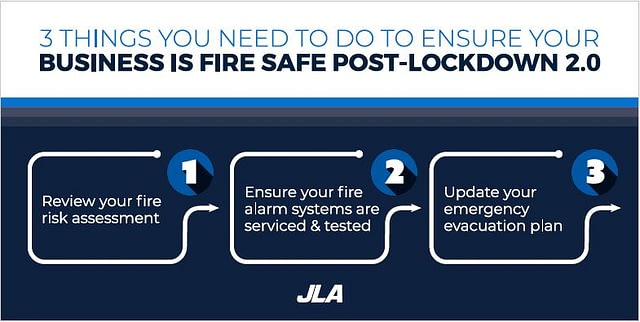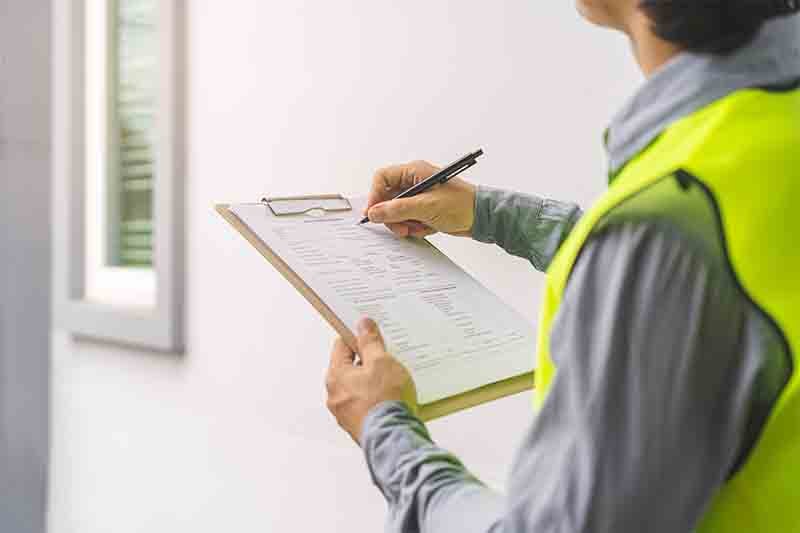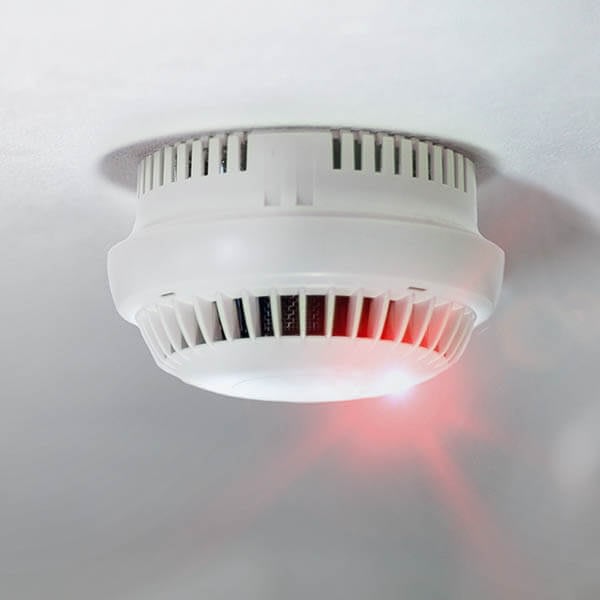If your business is being forced to close during the Coronavirus lockdown, it’s still vital to maintain the servicing plan that’s already set for fire equipment across your premises – or put one in place if you currently don’t stick to a ‘compliance’ calendar. It’s especially important to make sure your annual alarm or extinguisher checks are still completed if due.
While it may be tempting to delay planned service visits until the lockdown lifts, we’re urging our customers to think ahead, switch to a ‘ready to re-open’ mindset, and take the opportunity to tick off all the fire tasks that might otherwise be difficult to address when you’re fully operational and focusing on day-to-day priorities. Failing to complete certain inspections while ‘hibernating’ could mean you’re not meeting legal requirements when you get back to business later in the year, and allowing service schedules to slip could put you on the back foot when the time comes to welcome employees and visitors again.
The maintenance and testing of the fire detection and alarm system should be continued where it is possible and safe to do so. This should be prioritised based on the risks identified by the responsible person and their contractors.
National Fire Chiefs Council – Advice for businesses (COViD-19 Protection)
A fire risk assessment should ideally be carried out every 12 months, but even if you’ve updated yours fairly recently you may need to complete another based on closing your premises (or remaining open in a different or restricted capacity).
Changes to working practices, alterations made to the premises and staff numbers should be your main focus areas, but all equipment should be checked too especially if inspections and servicing was postponed during the previous lockdown.
Can I do my own fire risk assessment?
Has your fire alarm and overall detection system been tested and properly inspected this year? Have you kept up with service schedules in spite of the disruption already encountered since March?
Regardless of Coronavirus challenges, maintaining regular inspections at specific periods and intervals is a requirement under British Standards which informs your compliance under the Regulatory Reform (Fire Safety) Order 2005.
If your buildings are going to be unoccupied during lockdown, securing all doors and windows as well as gates and fences should be a priority, as should removing any sources of fuel or ignition which could cause fire to spread.
Blog: How to avoid fire hazards in the workplace
While evacuation won’t be a major concern during lockdown itself if your business is closed, extra downtime during November provides the ideal opportunity to make sure everything is in place ready for when staff and customers return.
Again, a full fire risk assessment can help you identify and remove risk for post-lockdown operation, but the main consideration should be whether the emergency lighting you have is suitable, sufficient and maintained in accordance with BS EN 50172 / BS 5266-8.
Are there a suitable number of fire extinguishers available in required locations? It may seem like you have too many during lockdown, but it’s important to maintain a plan for full occupancy, so you can return to business as usual quickly as soon as the government gives you the green light.
Fire extinguisher maintenance is essential to ensure your extinguishers are ready for use in an emergency situation in accordance with BS 5306-3, so while customers and employees may be absent from your buildings, it’s a good time to invite fire safety experts into them to assess and improve your processes.
Fire doors can soon let you down if they’re not maintained regularly and kept in good working order. During lockdown, with no through traffic, it’s a good opportunity to check all doors are fitted properly – and you’ll be able to replace them where necessary ready for December without disrupting escape routes which would otherwise be blocked during normal business operations.
Fire doors must be kept shut if your building is not in use (and also when you re-open), in order to maintain effective compartmentation – and compliance. Legally, public buildings must have ‘properly installed and maintained fire doors’. Using pots, weights, wedges and door stops to prevent them from closing fully renders fire doors instantly redundant, and therefore illegal.
It’s important, wherever you can, to switch off all unnecessary electrical appliances and remove plugs from their sockets. Appliances such as fridges and freezers may be left on, but all devices and equipment that is not essential during lockdown should be disconnected.
Have you recently had your wet and dry risers inspected and maintained? BS 9990 requires any dry risers installed to be tested under pressure annually with a visual inspection every six months. You should also replace any worn or missing parts including washers, straps, padlocks and gaskets.
Your fire sprinkler System (including heads) should also be well maintained if fitted, and inspected at least once a year.
At JLA, we can carry out one-off checks, or provide ongoing service contracts for complete peace of mind regardless of Coronavirus restrictions. We can also complete fire risk assessments to give you a full picture of the risks in your premises, as well as a documented plan for removing and reducing those risks in line with Fire Regulatory Reform (Fire Safety) Order 2005 compliance obligations.
Book a fire safety visit


